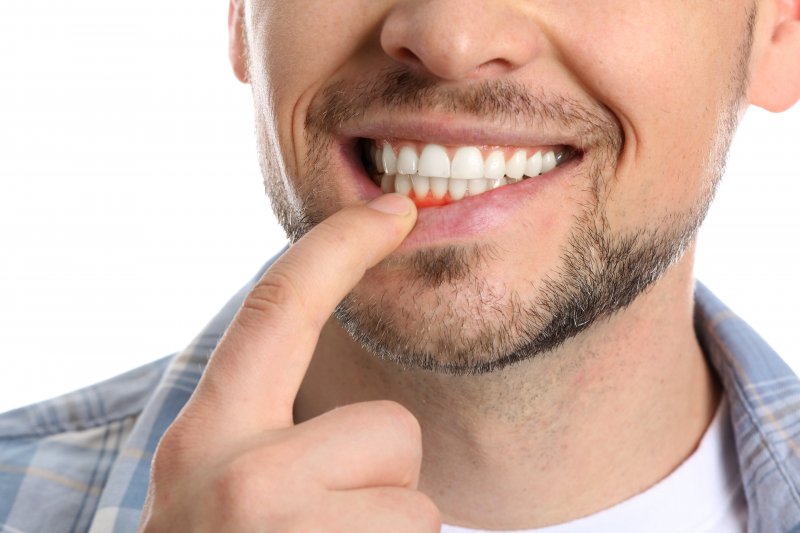
Have you heard of gingivitis and periodontitis before? Most people have, but they may not know what each one actually means. Although they’re both stages of gum disease, there’s a major difference between the two conditions. Are you interested in learning more? Read along as your dentist in Kansas City explains how gingivitis and periodontitis differ.
Gingivitis
Gingivitis is characterized as a chronic state of gum inflammation caused by excess plaque on the teeth. Most people with it experience symptoms like bleeding, tender, swollen, visibly red, and irritated gums. It’s one of the first stages of gum disease, acting as a warning sign from your teeth and gums that you must be more proactive about your oral health. The good news is gingivitis is easily reversible with periodontal treatment and good oral hygiene!
How Do I Know If I Have It?
Even if you take excellent care of your teeth, it’s possible to have some level of gingivitis. It’s worth noting that healthy gum tissue does not bleed – so if your gums bleed easily while brushing or flossing, that could indicate something’s wrong with them. With that in mind, make sure you visit your dentist to discuss your symptoms. Since gingivitis is reversible, the sooner you seek treatment, the better chance you have of stopping it.
Periodontitis
If you let gingivitis go untreated, it will eventually turn into a more severe stage of gum disease like periodontitis. When this happens, the gums inflame and recede, pulling away from the teeth and creating large pockets where bacteria build up. If plaque spreads and grows beneath the gum line, it can lead to tooth and bone loss. Periodontitis can lead to poor tooth alignment, gum recession, and clear pockets between the teeth and gums.
How Do I Know If I Have It?
Once gingivitis has turned into periodontitis, you may begin to notice some pain or discomfort in your mouth. Most patients experience other symptoms like increased sensitivity, loosening teeth, and soreness. When periodontal bacteria begin to attack your teeth’ supporting bone structure, it can cause pain and eventually lead to tooth loss.
What Increases Your Risk of Gum Disease?
Many factors may increase your risk of gum disease, including:
- Smoking. It’s no secret that smoking or using tobacco products is one of the biggest risk factors for gum disease.
- Poor oral hygiene. If you fail to brush and floss every day, you increase your chances of developing gingivitis.
- Hormonal changes. Hormone changes that occur during puberty, pregnancy, or menopause can increase your chances of sensitivity and gum inflammation.
- Unhealthy diet. Eating a well-balanced diet is crucial to give your body the vitamins and minerals it needs to thrive. Otherwise, your body will have a much harder time fighting off infections like gum disease.
- Chronic diseases. Health conditions like diabetes, HIV, and cancer can leave you more vulnerable to infection.
The main difference between gingivitis and periodontitis is that gingivitis is reversible, while periodontitis is not. But by taking proper care of your teeth and gums, you can prevent gum disease and maintain a healthy smile for years to come!
About the Author
Dr. Michael C. Byars is passionate about developing long-lasting relationships with his patients, exceeding expectations, and providing a truly satisfying dental experience. He earned his Doctor of Dental Surgery at the University of Missouri in Kansas City. If you think you may have gum disease, don’t hesitate to contact Dr. Byars and his team. They’ll provide you with high-quality treatment to give you the relief you deserve. To schedule an appointment, visit our website or call (816) 781-8222.

